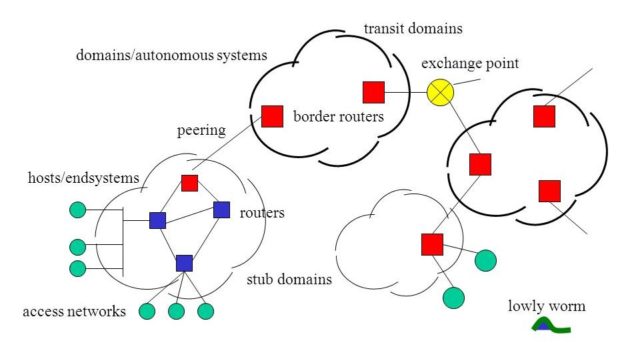An autonomous system (AS) can be defined as a collection of Internet Protocol(IP) routing that is connected and it is under the control of network operators that can be one or more, and there is a single administrative entity(or domain). An administrative entity presents a clearly defined routing policy to the very common internet. An autonomous system number (ASN) is a unique identifier that allows its autonomous system to exchange routing information with other systems.
There are mainly following categories of Autonomous Systems(AS), those types are categorized based on their operating policy and the connectivity.
- Multihomed: A normal Autonomous Systems keeps and maintains connections to one or the multiple numbers of other Autonomous Systems. Here, in this case, the Autonomous System will keep the connection to the internet even if one of the connections fails. In this type of Autonomous System, it does not allow the passing of traffic from one Autonomous System to others, unlike the transit Autonomous system.
- Stub: Normally An Autonomous System connected only to one another Autonomous System. If the routing policy of the network is the same as its upstream Autonomous System, then it will cause the waste of an Autonomous System number. The stub AS has to peer to other Autonomous systems, unlike the route-view servers.
eg: Private connection in the financial sector.
Private connection in the transportation sector.
- Transit: An Autonomous System can be considered as a transit autonomous system if, one as is an ISP for another. That is, normally if network A can use network B, and network B can use network C then, network A can use network C.
- Internet Exchange Point(IP or IPX): Here exchange internet traffic between the networks through ISPs(Internet Service Provider) or CDN(Content Delivery Networks).
 To identify an autonomous system we can use the advantage of a thing called, Autonomous System Number(ASN), which is globally available. Another use of this ASN is that it helps to transmit the exterior routing information with other autonomous systems that occur nearly.
To identify an autonomous system we can use the advantage of a thing called, Autonomous System Number(ASN), which is globally available. Another use of this ASN is that it helps to transmit the exterior routing information with other autonomous systems that occur nearly.
Also read…
There is a limit in the autonomous system number. The network should be multi-homed and it should have a unique routing policy to assign the autonomous stem number and this process happens only through the request to the local internet registry.
Range of autonomous system number: 1 to 64, 511.
If there need an autonomous system number, a number is automatically assigned which is the next highest unused number. These assigning are responsible for the ARIN(American Registry for Internet) and it is also responsible for managing IP address allocations, assigning and tracking ASNs. The ASN allocation is based on 16-bit ASNs, currently. Also, 32-bit ASN is used.
Types of Autonomous System Number(ASN):
2 Types:-
- Public (ASN).
- Private (ASN).
If one autonomous system transfers routing information with another autonomous system that is on the public internet, we can make use of public autonomous system numbers.
If the autonomous system communicating, through a Border Gateway Protocol, with a single provider, we can make use of private autonomous system numbers. The routes are visible on the internet in the case of a public autonomous system number. These disadvantages can be overcome by the private autonomous system which hides the routes from the internet.
Download What is Autonomous System in pdf – Click here
